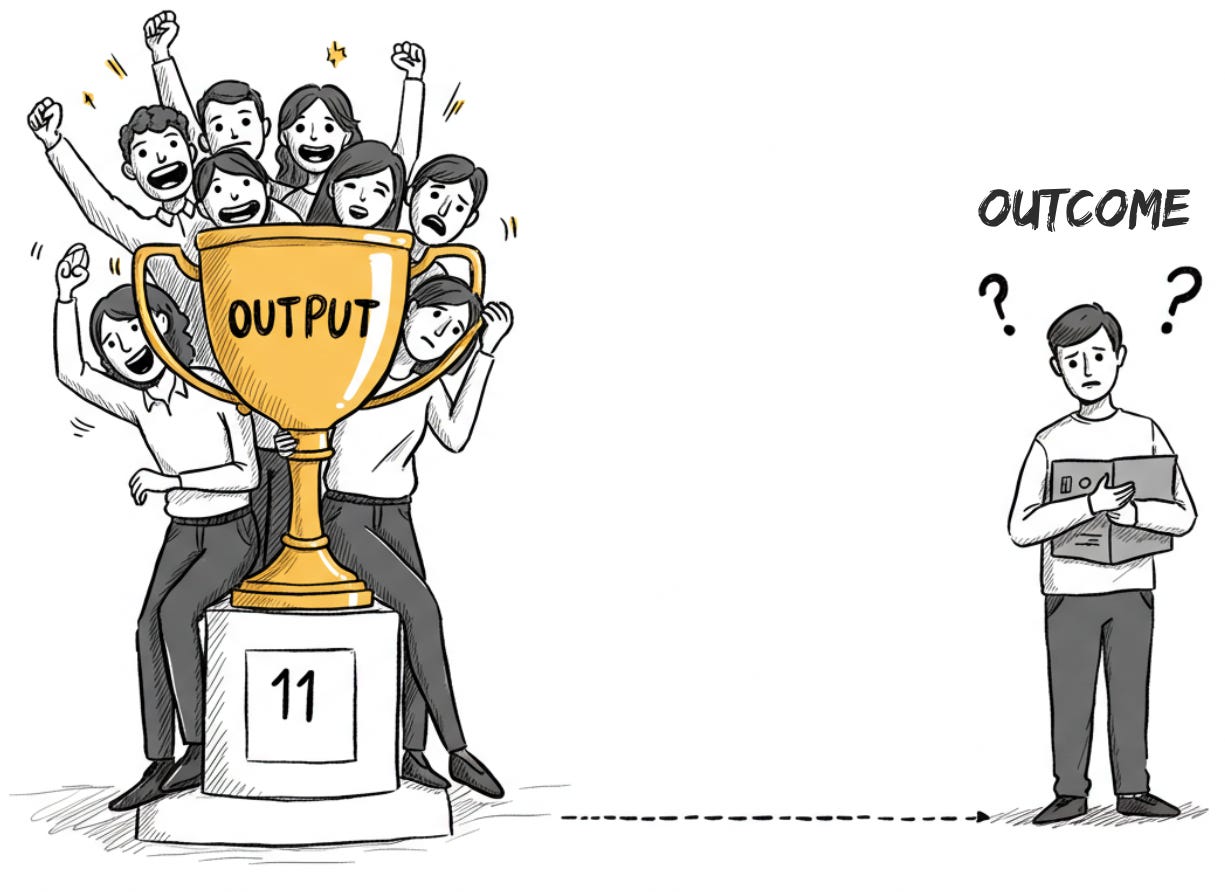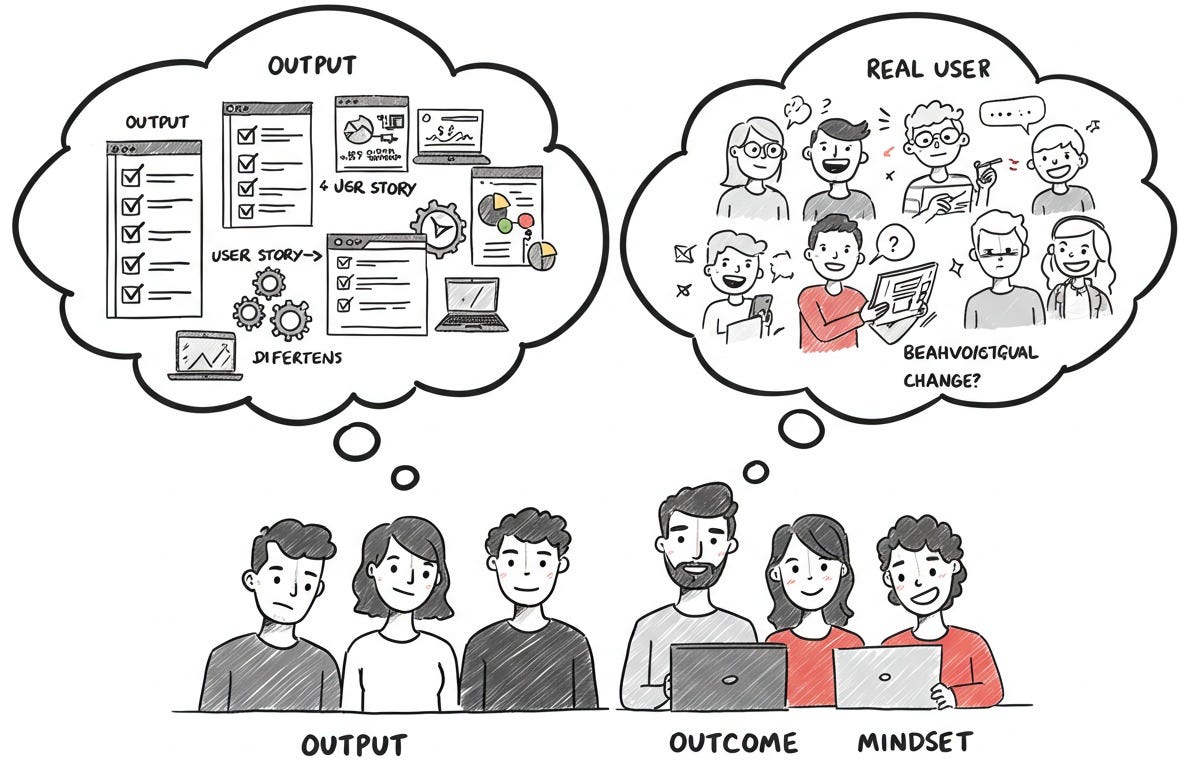Product Output Vs Product Outcome
What's the role of a Scrum Master when it comes to Product Outcomes
Hello 👋, It’s Vibhor. Welcome to the 🔥 paid member only🔥 edition of Winning Strategy: A newsletter focused on enhancing product, process, team, and career performance. Many subscribers expense this newsletter to their Learning & Development budget. Here’s an expense template to send to your manager.
Delivering a product is simple, right?
We just need:
A sprint packed with user stories
A burndown chart that slopes downward
A demo that makes everyone clap on Friday
Ship all that, and success should follow.
Except… it often doesn’t.
Because none of those things prove the product is solving anybody’s problem, they only prove we were… busy.
That’s the trap of Product Outputs.
They look impressive in Jira, but are invisible in the real world. And that’s where a Scrum Master or a team coach can really help their teams.
So let me ask you a question.
What’s the real job of a Scrum Master when it comes to building products?
Is it to speed up the assembly line?
No!
The Scrum Master’s role is not to accelerate the delivery of user stories (although that’s what is taught in Scrum certifications). It is to guide the team’s discussions in the right direction so the team can concentrate on Outcomes instead of Outputs.
Sounds obvious?
Probably, but… there’s a little problem.
Most people in product teams (including Scrum Masters) don’t know the difference between an Output and an Outcome.
Yep…they do not.
In this post, we will explore that difference in a way that makes it easy for you to ensure that what your team delivers matters to the end-user.
Let’s get started.
The Outcome Mindset
Let’s get something straight:
An outcome IS NOT a user story, a feature, or something the team can tick off in a checklist.
An outcome (in the product world) is a change in human (end user) behaviour.
What kind of behaviour?
Something that will make people (real people) do things differently because of what the team built.
This change in human behaviour is what drives business results.
Let that sink in for a moment...
We're not talking about:
Completing sprint goals
Shipping new features
Completing backlog items
We're talking about:
changes in how people interact with the product, and
changes that matter to the business
When your team has an Outcome Mindset, they don’t ask:
"What features should we build next?"
They ask:
"What customer behaviours will drive the business forward?"
This is a powerful change in the mindset.
Why?
Because it helps your Product Trio (Product Owner, Dev Team, and UI/UX) create value in two directions simultaneously:
For your customers
For your business
This mindset helps your team align around the work they should actually be prioritizing, choose the right customer opportunities to address, and measure the impact of their experiments in ways that... actually matter.
Sounds more meaningful than just watching that burndown chart… doesn't it?
The outcome mindset separates teams that are busy from those that are effective.
Types of Outcomes
So, we know outcomes matter.



